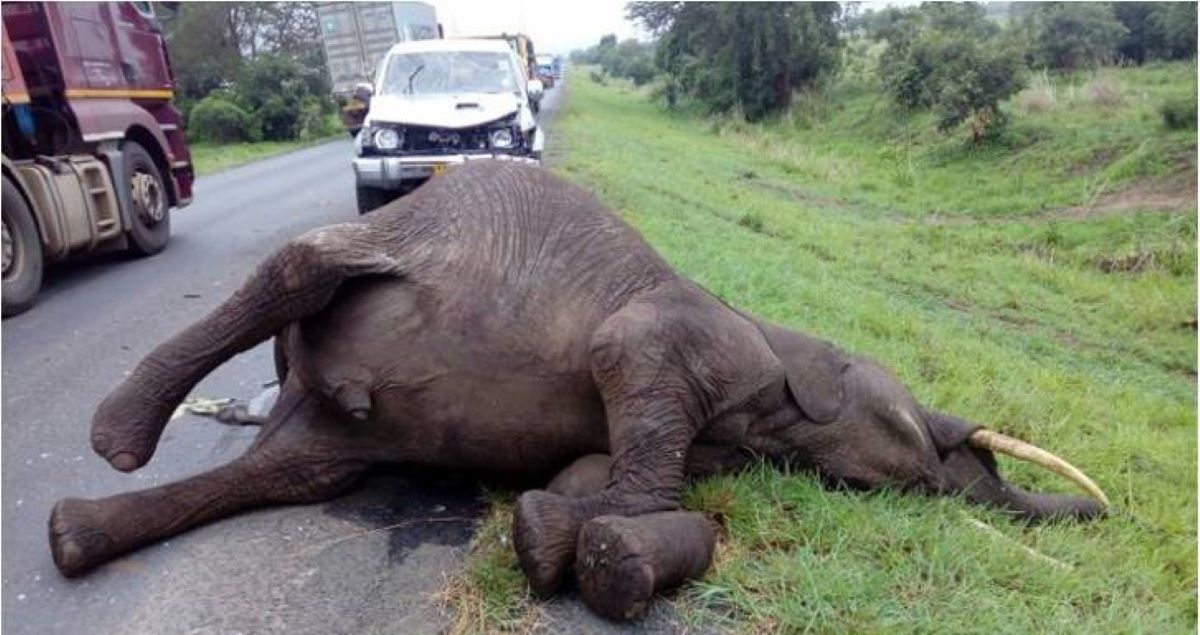The Road passing though Mikumi National Park getting live surveillance cameras to prevent wildlife massacre
Live highway surveillance cameras will soon be installed along the 50 kilometers stretch of Tanzania-Zambia highway that cuts through Mikumi National Park in Morogoro Region.
The new development comes just as the Park is bracing to mark its 60th Anniversary in efforts to save wildlife from being hit by buses and trucks in the notorious roadkill incidences in the area.
The Tanzania National Parks’ Senior Conservation Officer, David Kadomo explained that the multinational highway dissects Mikumi National Park through a 50 kilometers stretch where speeding trucks and buses keep hitting wildlife.
Conservator Kadomo, who is the acting conservator in-charge at Mikumi National Park, revealed that more than 400 wild animals get killed along the highway stretch which passes through the reserve at the rate of one death per day.

“There are road rules here, fixing speed limits at 70 kilometers per hour during the day and 50 kilometers per hour in the night,” said the Senior Conservator, who however pointed out that more often than not, drivers break the regulations.
Now that many buses also travel during the night when drivers are sure nobody is looking, the speed is always broken.
Large trucks and Buses cruise along the 50 kilometers of the road passing though Mikumi National Park at the average rate of three vehicles per minute. It is quite a busy highway, day and night.
Even worse, most wild animals are nocturnal hunting or grazing at dusk and strong car lights usually stupefy and immobilize them thus becoming easier to be hit by any speeding truck or bus.
Many drivers escape after hitting wildlife to avoid the heavy penalties imposed. Hit and Run cases are common when the cars are not badly damaged.
“If you hit an elephant, for instance the fine is USD 15,000 which is equivalent to 40 Million/-; the same amount applies to the Giraffe,” explained Mr Kadomo.
Other roadkill fines include 12.5 million/- for any lion hit and 5 million/- for a Buffalo.
But hitting animals is not the only highway vice in Mikumi, park littering is another problem arising from buses and trucks using the route.
According to the conservators in the area, an average of 4 tons of garbage is collected every year from items being discarded or thrown from vehicle windows within the 50 kilometers section of the highway.
Some of the garbage thrown from vehicles are toxic and may cause poisoning or suffocation among wildlife species.
One of the Driver Guides working for Happy Africa Holiday Tour Company, Kumbuko Baran said the penalties imposed for hitting wildlife in Mikumi must apply to all drivers.
“Drivers of government vehicles seem to be notorious for over speeding and hitting animals, safe in the knowledge that no disciplinary steps will be taken against them,” pointed out the tour guide.
The Tanzam A-7 tarmac Highway is about 2400 kilometers long starting from the Port city of Dar es Salaam and passes through Coast, Morogoro, Iringa, Njombe, Mbeya and Songwe Regions.
The highway crosses the Mikumi National Park along a 50 kilometers long stretch between Morogoro and Iringa. In this section drivers come into contact with various species of wildlife that usually cross from one side of the park into another.
“The Government, through the Ministry of Natural Resources and Tourism in conjunction with the Tanzania Roads Agency (TANROADS) are therefore working on a special high-tech project to install live day and night cameras along the road,” revealed the conservator.
With the knowledge that they are now being watched, drivers will maintain discipline on the road and avoid unnecessary accidents especially those involving wildlife.
The conservator did not divulge when exactly the cameras will start operating, but insisted that it will be very soon because all the necessary initial arrangements have been completed.

